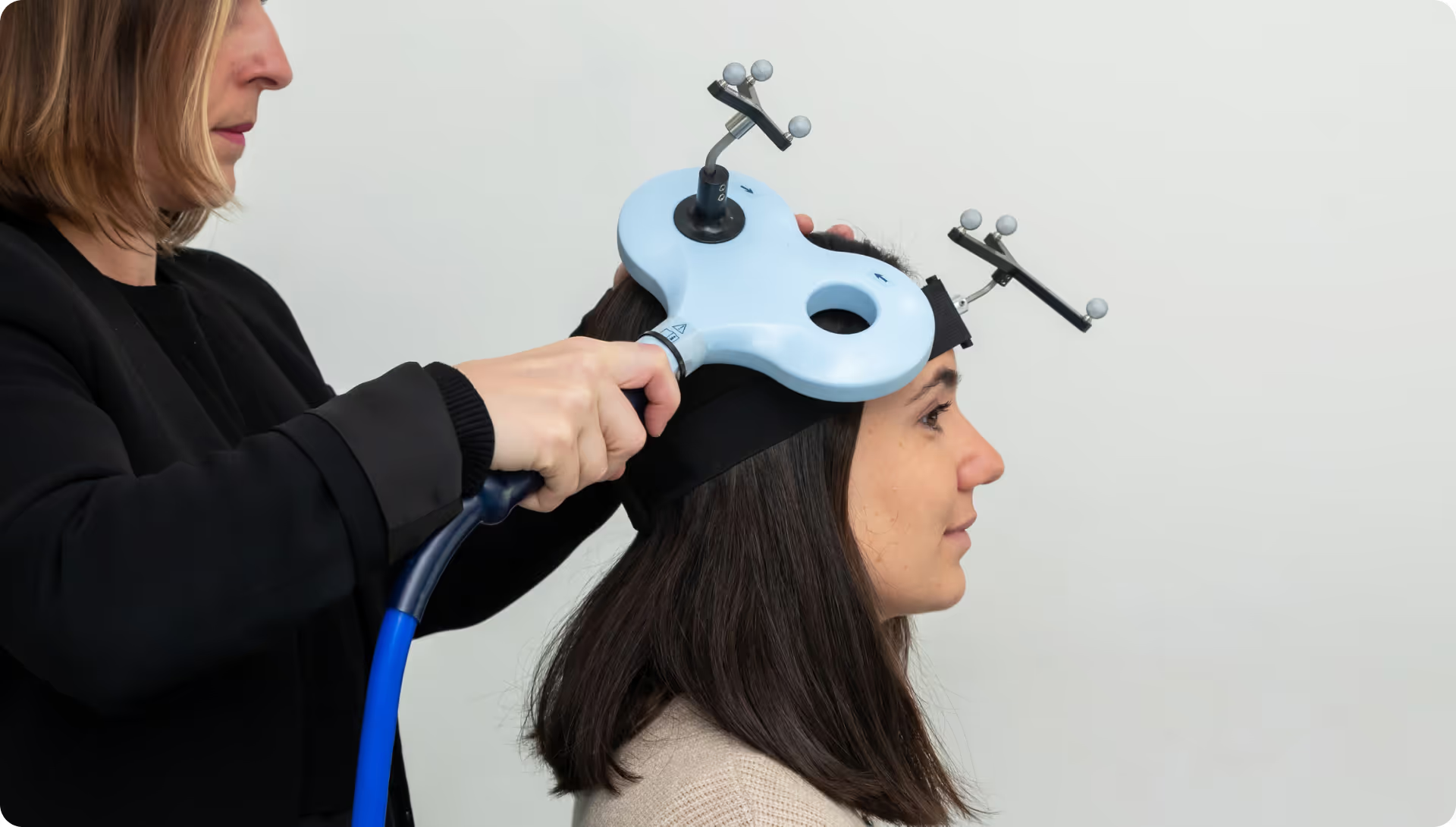
What is TMS
Transcranial Magnetic Stimulation (TMS) is an FDA-cleared, non-invasive neuromodulation treatment for individuals living with depression and other mood disorders. TMS uses magnetic pulses, similar in strength to an MRI, to activate brain regions that are underactive in depression. Unlike medications, TMS does not involve systemic side effects, and unlike electroconvulsive therapy (ECT), TMS does not require anesthesia or cause memory loss.
Treatment time: Daily outpatient sessions over several weeks.
How does it work?
During TMS, a magnetic coil is placed gently on the scalp, delivering focused pulses that stimulate the prefrontal cortex, which is an area of the brain that is involved in mood regulation. This stimulation helps to “reset” neural pathways to promote healthier brain activity and connectivity. Research shows that TMS can relieve symptoms of depression.
Treatment
Step 1: Initial Assessment
Patients begin with a consultation with a Salma Health psychiatrist to confirm whether TMS is the appropriate treatment. We’ll review your personal history, past treatments and current symptoms.
Step 2: Brain Mapping and Treatment Setup
On the first treatment day, we will identify the optimal target location and determine the correct stimulation intensity for your brain. This ensures the treatment is precise and tailored to you.
Day 3: Daily TMS Sessions
- Schedule: Sessions typically occur 5 days a week and last 20-40 minutes each.
- Course length: Most patients complete 6 weeks of daily treatments with an additional 6 sessions over 3 weeks..
- Experience: You will sit comfortably in a chair while the TMS coil delivers magnetic pulses. You can return to normal activities following treatment.
Step 4: Monitoring and Adjustment
Throughout your course of TMS treatment, our team will check in with you regularly to track your progress and adjust the treatment plan as needed.
Step 5: Post-Treatment Care
At the end of your course, we’ll meet for a final evaluation to discuss ongoing support options, which may include maintenance TMS sessions, therapy or medication as part of your long-term wellness plan.
Getting started
Taking the first step is easy. Schedule a free video call with our team to explore whether TMS is right for you. We will walk you through the process, answer your questions and help you decide the best next steps for your mental health.




.avif)
.avif)
.avif)